Sandalwood Benefits, How To Use, Side Effects, Research
Sandalwood is a coolant, very useful in gastritis, burning sensation in hands and feet. It is also a good ingredient to include in your juice mixes, in small amounts, of course.
Botanical Name- Santalum album Linn.
Family-SANTALACEAE (Chandana kula)
Table of Contents
Medicinal properties
Sandalwood medicinal Properties:
Rasa (taste) – Tikta (bitter) Madhura (sweet)
Guna (qualities) – Laghu (light), Rooksha (dryness)
Vipaka- Katu – Undergoes pungent taste conversion after digestion.
Veerya – Sheeta – Cold potency
Effect on Tridosha – Balances Kapha and Pitta Dosha.
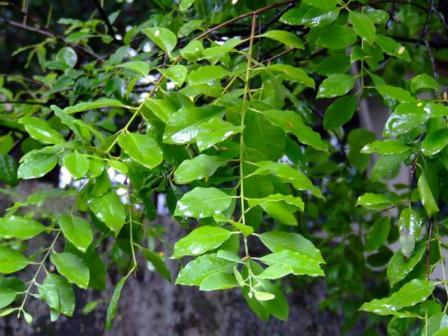
Part used, dosage
Part used- Heart wood (Kanda Sara), Sandalwood oil
Dosage- Powder 3-4 grams in divided dose per day, decoction 50-100 ml – in divided dose.
Oil – 5 – 10 drops, in divided dose per day.
How to take it?
250 – 500 mg of sandalwood can be consumed along with water, in the morning or afternoon.
To prepare its decoction (Kashayam), a tablespoon of sandalwood powder is mixed into two cups of water, boiled and reduced to half a cup. This in a dose of 20 ml, twice a day can be consumed.
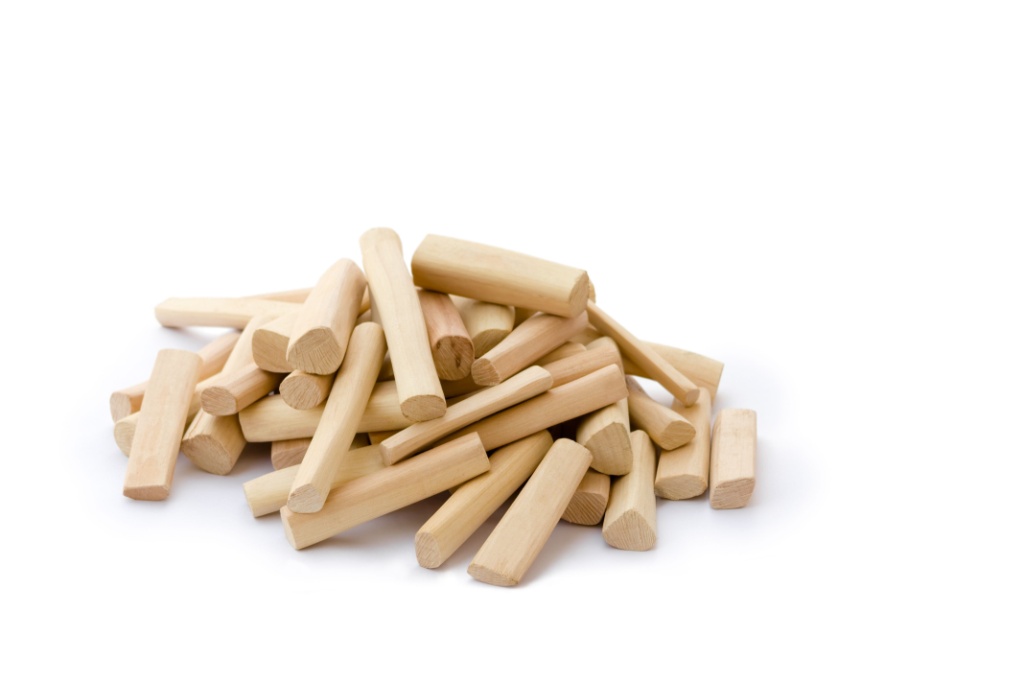
Use in celibacy
Use of sandalwood in controlling sexual urge, celibacy:
Sandalwood has been used in Hindu cultural rituals for thousands of years. Reason for this is quite intriguing. Sandalwood in small doses acts as aphrodisiac, due to its tiny sweet taste and coolant properties. But it is also very useful in controlling sexual urge and to maintain celibacy – Brahmacharya. This is the same reason, Sandalwood is used as a main ingredient in Chandanasava – a fermented Ayurvedic medicine with Sandalwood as main ingredient is used in treating Spermatorrhoea (Called as Shukra Meha in Ayurveda). Spermatorrhoea is – flow of semen along with urine. Chandanasav
For this exact same reason, Tulsi – Holy Basil is also used in Hindu spiritual practices. Read more about Holy Basil
And for this same reason, having 250 – 500 mg of Chandana powder at night, is a good remedy for premature ejaculation. Premature ejaculation occurs where the speed of excitement crosses the speed of formal proceedings. Sandalwood helps to control the mind better.
Burning Urination With Blood
This home remedy is mentioned in two textbooks – Chakradatta and Bhavaprakasha.
The Sanskrit verse –
शृतशीतपयोऽन्नाशी चन्दनं तण्डुलाम्बुना ।
पिबेत्सशर्करं श्रेष्ठमुष्णवाते सशोणिते ॥
चक्रदत्त, ३३-१४, भावप्रकाश मूत्ररोगाधिकार ३६-३९
śṛtaśītapayo’nnāśī candanaṃ taṇḍulāmbunā |
pibetsaśarkaraṃ śreṣṭhamuṣṇavāte saśoṇite ||
cakradatta, 33-14, bhāvaprakāśa mūtrarogādhikāra 36-39
Let us break down the shloka and understand its meaning.
शृतशीतपयो – śṛtaśītapayo – boiled and cooled milk
अन्नाशी – annāśī – cooked rice eating.
चन्दनं – candanaṃ – sandalwood paste or powder
तण्डुलाम्बुना – taṇḍulāmbunā – uncooked rice washed water.
1 part of broken rice + 8 parts of water -> filter
पिबेत् स शर्करं – pibet sa śarkaraṃ – consume along with candy sugar
So, sandalwood + rice washed water + candy sugar.
श्रेष्ठम् उष्णवाते – śreṣṭham uṣṇavāte – very useful in Ushnavata – burning urination
सशोणिते – saśoṇite – associated with bleeding.
The remedy: Mix 20 grams of uncooked rice in 120 ml of water. Macerate well, filter. Take 3 – 5 grams of sandalwood powder, mix it with rice washed water and consume it before food, once or twice a day.
The diet to follow is cooked rice with milk.
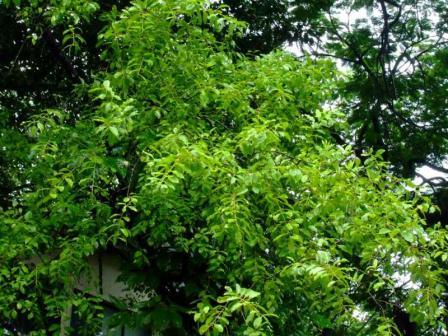
Usage according to season
Usage of Sandalwood in different seasonal regimens:
During spring, Juices, fermented drinks and Beverages of grape juice, sharambu (extract of sandalwood) is advised.
One should smear his body with saffron, camphor, sandalwood and Agaru ( Aquilaria Agallocha). They reduce itching and body odor. This was the ancient way of perfume.
In summer, during night, after smearing body with sandalwood paste, one should sleep in open airy roof, which is cooled by moon rays
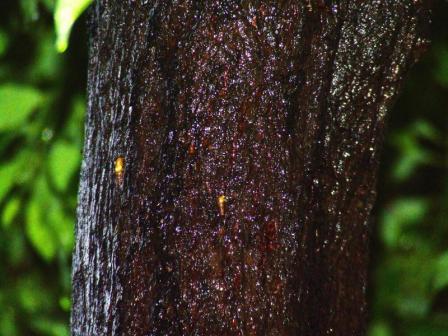
External application
Sandalwood paste external application:
A paste made of it, applied externally relieves burning sensation, improves skin complexion, cleanses wounds and stops secretions.
Its paste is applied over the forehead to relieve migraine, headaches.
In herpes its paste helps to relieve pain and burning.
Its powder rubbed into hands helps to relieve sweaty palms. (Also gives a special fragrance to your palms).
It helps to check excessive sweating and bad odor. For this same reason, sandalwood oil is extensively used in room fresheners, perfumes, incense sticks etc.
Sandalwood for headache
Paste of sandalwood applied over the forehead relieves headache caused by stress.
Paste prepared with costus root along with Tagara, dill seeds, Licorice, sandalwood and ghee is used to apply externally to relieve headache, shoulder and back pain. Reference: Charaka Samhita Rajayakshma Chikitsa.
Sandalwood essential oil
Sandalwood oil contains similar properties. It is coolant and diuretic. 1-3 drops are added to cranberry juice to enhance benefits.
The oil can be pressed from the wood or extracted with alcohol or water. It acts as antiseptic and disinfectant. It is also used in bronchitis.
Distribution, varieties
Distribution: found in dry- scrub forests, Vindhyas mountains, mainly in Karnataka and Tamil Nadu
Varieties:
There are mainly two varieties
White Sandalwood – Shweta Chandana – Santalum album
Red Sandalwood – Rakta Chandana – Pterocarpus santalinus – Will be dealt separately.
Dhanvantari Nighantu – Five – Chandana, Rakta Chandana (red), Kuchandana (Patranga),. Kaleeyaka and Barbarika
Kaiyadeva Nighantu – 6 varieties
Bh. Pr ni – 4 varieties
Sodala Nighantu – 8 types – Gosheersha, Shreepriya, Sambhrana, Kakubha, Barbarika, Rakta chandana, Patanga, Harichandana.
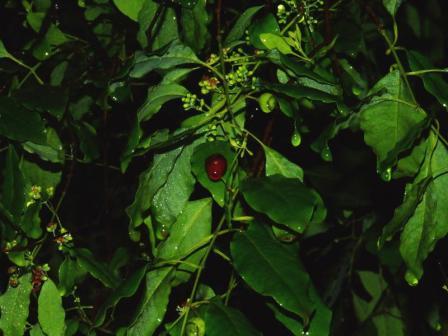
Santalum album chemical constituents
Sandalwood oil-a-Santalol, B- Santene,and Santalenes, Santenol, Teresantalol, nor- Tricycloekasantalal, 1- santenone, santanone, teresantalic, acid, a- and B- Santatalic acids.
Other Parts- Santalic acid, n-octacosanol, Plamitone etc.
(Reference: Illustrated Dravyaguna Vijnana, Vol. II, by Dr JLN Shastry)
Morphology
Small evergreen glabrous tree
Branches – Slender and drooping
Sapwood – White and odorless
Heart wood _ Yellowish brown in color
Leaves – 4- 6 cm long elliptic lanceolate, subacute,
Inflorescence – Terminal axillary paniculate cyme
Flowers – Brownish purple in color, perianth is companulate
Fruit – Drupe
Sanskrit verse
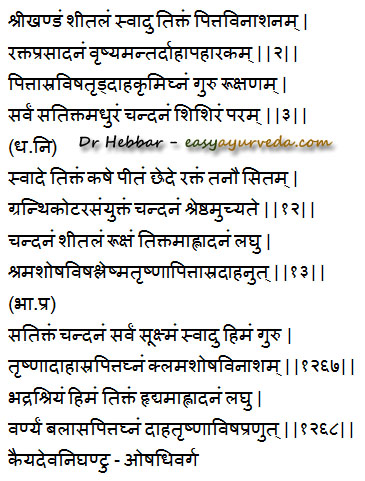
Sandalwood benefits
(Charaka Samihta Sutrasthana 25)– Sandalwood (Chandana) is best in relieving bad odor, burning sensation and best to apply as a paste.
Rakta Prasadana – Detoxifies blood, useful in bleeding disorders
Vrushya – acts as aphrodisiac
Dahahara, Antardaha hara – relieves internal burning sensation, seen in Pitta imbalance conditions such as gastritis, sore throat, laryngitis, sun stroke etc.
Pittasrahara – useful in bleeding disorders such as nasal bleeding, menorrhagia etc.
Vishahara – anti toxic
Trushnahara – relieves thirst
Krumighna – Relieves worm infestation, useful in infected wounds
Shishira – coolant
Ahladana – brings about pleasant effect, nourishes sense organs
Klamahara, Shramahara – Relieves tiredness, fatigue
Shoshahara – relieves emaciation, dehydration
Varnya – Improves skin tone and complexion
It acts as diuretic, used in treating bladder inflammation, urethritis and vaginitis.
It is used in eye disorders involving excessive secretion, redness and burning.
It is useful in menorrhagia and excessive white discharge (leucorrhea).
It is useful to control anger (by balancing Pitta). Hence useful in psychiatric disorders such as Mania, Schizophrenia etc. Hence used as ingredient in Manasamitra Vatakam
Chandana is used in acute dermatitis, gonorrhoea, palpitations.
Pharmacological Action
Anti bacterial
Anti viral
Anti fungal
Anti oxidant
Antipyretic
Hemostatic
Cooling
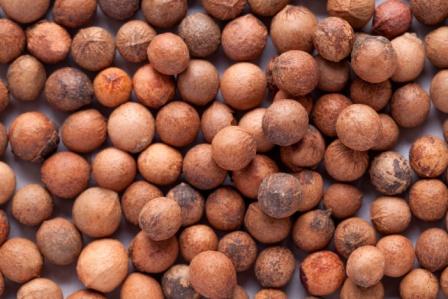
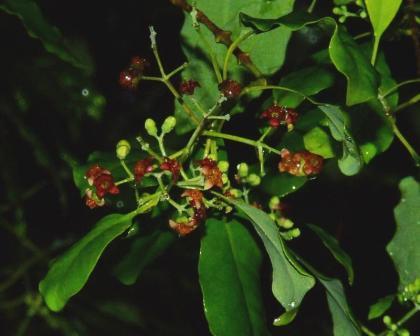
Photo courtesy – Shubhada Nikharge via flickr
Sandalwood side effects
Because it is a coolant, people with asthma need a little care while taking it. or it can be mixed with equal quantities of pepper powder to balance out the coolant effect.
It is safe to use in children and lactating mothers. For pregnancy use, it needs to be taken under medical supervision.
White Vs Red Sandalwood
As per Sharangdhara Samhita, if you are preparing herbal powder for oral intake, or fermented infusion (Asava), or herbal ghees or herbal oils, white variety is to be used by default.
Whereas if you are preparing cream for external application or herbal decoction for oral intake, then red variety is the default choice.
This is probably based on the phyto-chemical affinity of the two types to different mediums — water, fat and alcohol.
Interaction with medicines, supplements
Can this be used while taking Homeopathic medicine?
Yes. This product does not react with homeopathic medicine.
Can this medicine be continued while taking supplements like multivitamin tablets, Omega 3 fatty acids etc?
Yes. Generally, this product goes well with most dietary supplements. However, if you are taking more than one product per day, please consult your doctor for an opinion.
With western
medicines
Seek your
doctor’s advice if you are taking this product along with other western
(allopathic / modern) medicines. Some Ayurvedic herbs can interact with modern
medicine.
If both Ayurvedic and allopathic medicines are advised together, then it is
best to take Allopathic medicine first, wait for 30 minutes and then take the
Ayurvedic medicine.
Research
Anti ulcer activity
History and other uses
Ayurvedic medicines
Ayurvedic medicines with Sandalwood as ingredient:
Chandanadi Kashayam – used in the treatment of fever, cough, thirst etc.
Marma Gulika – used in cardiac and liver disorders
Sandalwood along with other herbs such as Vacha, Agaru, Jatamansi, Camphor etc is used for fumigation of fermentation vessels, in the preparation of Arishta and Asava – Alcoholic Ayurvedic medicines.
Classical categorization
Charaka-
Daha Prasamana – Group of herbs that relieves burning sensation
Angamada Prassamana – Group of herbs that relieves bodyache
Trishna Nigrahana – Group of herbs that relieves excessive thirst
Varnya – Skin complexion enhancing group of herbs
Vishaghna – Anti toxic group of herbs
Kandughna – Itching-relieving group of herbs.
Sushruta—Salasaradi, Sarivadi, Patoladi, Priyangvadi, Guducyadi
Vagbhata- Asanadi, Patoladi, Sarivadi, Priyangvadi, Guducyadi
Bh. Pr. Ni – Karpooradi varga
Vernacular names
Names in different languages:
Hindi Name- Safed chandan,
English Name- Sandalwood
Telugu Name- Tella Chandanam
Bengali Name- Chandan
Tamil Name- Chandanam, Sandanam
Gujarati Name- Sukhada
Malayalam Name- Candanam
Kannada Name- Sri Gandha
Sanskrit Synonyms
Gandhasara, Malayaja, Srikhanda,Maharha, Shveta Chandana, Bhadrashri, Malayaja, Gosheersha, Tilaparnaka Shreekhanda, Chandradyuti.
chandana- “chandati ahladayatiti, – Pleasant to see
Gandhasara – gandha saro asya – Aroma is situated in heart wood.
chandradyuti-“chandrajyosnavadahaladakam – cool and pleasant to see, like the Moon
Bhadrashri- bhadra shri shobha asya – Pleasant, auspicious
Shri khanda – shriya utani khandanyasya – Which is beautiful, good .
Gandharajam- gandha dravyanam raja shreshtam – Best among all aromatic substances.
Sarpavasam– Sarpa nivasyatraha – serpants are found often near the tree.
Tilaparnakam–tilasyeva parnanyasya – Leaves are similar to those of sesame plant
Malayaja – Malaye pradeshe jata – grows in Malaya region
Shishiram –“sheetam sparshe veerye cha – It is a coolant
Sthanika Karma (Systemic Action)
External Application – Cooling, cures burning sensation, improves complexion. It helps to check excessive sweating and bad odor. Its paste is applied over the forehead to relieve headache (paittika shirasula).
Internal administration-
Nervous system – Improve intellect, mind calming. Indicated in mental disorders.
Digestive System – Pacifies pitta dosha. indicated in excessive thirst, Jaundice, Acidity etc.
Respiratory system – Helps to expel vitiated kapha dosha. indicated in chronic cough, epistaxis etc.
Excretory System – Increases urine output. indicated in Dysuria, UTI etc.
Circulatory system – Indicated in bleeding disorders, Indicated in weakened heart function.
Tapakrama – Indicated in fever associated with burning sensation
Satmikarana – Anti poisonous









32 comments on “Sandalwood Benefits, How To Use, Side Effects, Research”
Avinash
Doctor how long does the sandalwood paste have to be kept for migraine. Also, is the paste to be made with water or something else ? Thanks a lot.
Dr J V Hebbar MD(Ayu)
Hi, the paste is to be made with water. The paste should be left on forehead for 5 – 10 minutes, preferably in the morning, before food (and bath).
anjali
I want to buy pure red sandalwood powder,plz suggest me which brand to buy online as it is unavailable in my city.
Pranali
Which sandalwood is good to get rid of blemishes on the skin.. Red or white?
Dr Malini Bhat
Madam, Both can be used.
kiran
MY guru galta peeth avdeshacharya ji told me about this and i used this, it is superb coolent ..i love this too much , i m using everyday in drinking and as facepack , its great anti ageing effect and control blood pressure
Ashok Kumar
Dear Sir, some Ayurvedic Docs prescribe santalum album, rosa centilolia, rauwolfia, elect ta-ra cordomom etc for high BP, nervousness, facial flushing, anxiety etc I shall be grateful for elaboration/usefulness of these in aforesaid conditions
Thanking you
Ashok
Dr J V Hebbar MD(Ayu)
Hi, just go to easyayurveda.com and find the search box in the right column. Enter these herbs and you will find the details.
Poonam
Sir,Namaste,How sandalwood oil Kaveri brand be used for hair benefit? can few drops directly at ends and few drops be added into coconut oil?
Dr J V Hebbar MD(Ayu)
Hi, better to add it to coconut oil and then apply it.
Dr J V Hebbar MD(Ayu)
Good to know! Thanks. 🙂
Bunty
Is chandan powder good in treating against e coli bacterial infection and burning sensetion, difficulty in urination cause of it ?
Dr J V Hebbar MD(Ayu)
It is useful in relieving burning sensation. But it also eases the difficulty in urination.
It holds some promise on E coli as well. (research – http://www.wattagnet.com/articles/8778-sandalwood-in-animal-feed-may-reduce-e-coli-listeria-growth)
Ravi
Is there any other juice other than cranberry juice(it’s too sour) that the sandalwood oil can be added and be drunk with ?
Thank you.
Dr J V Hebbar MD(Ayu)
Sugarcane juice.
HGK Reddy
Many thanks Fr Hebvar for your valuable suggestions . May I pl. know about the availability , cost of sandlewood fruits ?
Dr J V Hebbar MD(Ayu)
I have not seen it available for purchase in market or online. I hope that someone among the readers might help you. Regards
anza
sir,will sandalwood powder reduces acne and blackheads?
Mmp
How can fresh white Chandan paste and misri solution help in relieving iritis?
Dinesh
Sandalwood oil can benefit for ulcer, fatty liver urine burning
Dr J V Hebbar MD(Ayu)
Useful for local ulcer. Sandalwood powder is useful in fatty liver and burning urination.
Pramila
Hello dr.
Wanted to know the difference between edible sandalwood oil and essential sandalwood oil..
How to identify the same
Thanks in advance
Dr J V Hebbar MD(Ayu)
No idea.
Anju
Sir plz tell how to make sandalwood sherbet at home .
Pooja
Hi sir is consuming sandalwood edible oil orally in lukewarm water useful in treating hyperpigmentation on body and reduce excessive facial hair growth .
moon agarwal
Thanks for your reply. So i take it for a few weeks then give a gap for 10 days and start again? Please elaborate. I have severe hyper pigmentation. Also have iron, D3 and some other deficiency including high cholesterol. I am on a lot of supplements since 2 months for the same. My age is 48. Please advice.
Prof. T.Pullaiah
A book entitled Red Sanders: Silviculture and Conservation has recently been published by Springer.
Dr J V Hebbar MD(Ayu)
Congratulations sir 🙂
Vicky
Sir I want to use sandalwood oil for scalp to reduce heat. Request you to suggest a branded Ayurvedic oil for above.
Dr J V Hebbar MD(Ayu)
Sandalwood essential oil is available in amazon here
https://amzn.to/3fKeZLj
(affiliate link)
Kamal
Doctor do the leaves of the sandalwood tree have similar properties?
Dr J V Hebbar MD(Ayu)
Yes